Car manufacturers are constantly racing to build more efficient and more powerful engines. Small displacement turbocharged motors that pack plenty of power are the norm these days. Alas, this type of efficiency comes at a price. Modern engines require niche synthetic oils to keep everything lubricated.
The entire automotive oil industry is focusing most of its efforts to keep up with new engines and their particular requirements. So much so that it’s forgetting that older cars still need proper lubrication. Motul is one of the first automotive oil manufacturers to design a special Motul Classic line of lubricants specifically for youngtimers and oldtimers alike.

Motul Classic Engine Oils
The world of modern classic cars is expanding with every passing year. Cars built in the ‘80s and the ‘90s are now considered youngtimers, while older cars are already in the modern classic range. Keeping all of these vehicles on the road is becoming increasingly difficult due to a shortage of parts and wear components.
Furthermore, many owners of such vehicles are also finding it difficult to source adequate lubricants for their vintage engines. With most engine oil manufacturers focusing on new cars, oldtimer and youngtimer enthusiasts were left to chase old, often hard-to-find stocks of lubricants. Motul was one of the first brands to introduce a dedicated line of classic oils.
The demand for a dedicated vintage line of products was always there. Motul had recognized this and listened to the community. However, instead of revamping vintage formulas, engineers at Motul have decided to design special blends that combine vintage formulations with modern technologies.
The result is a Motul Classic range of oils that outperforms their vintage counterparts in just about every way. Most importantly, these oils ensure optimal protection to the now already worn engine components.
Synthetic Reinforced Base Oils
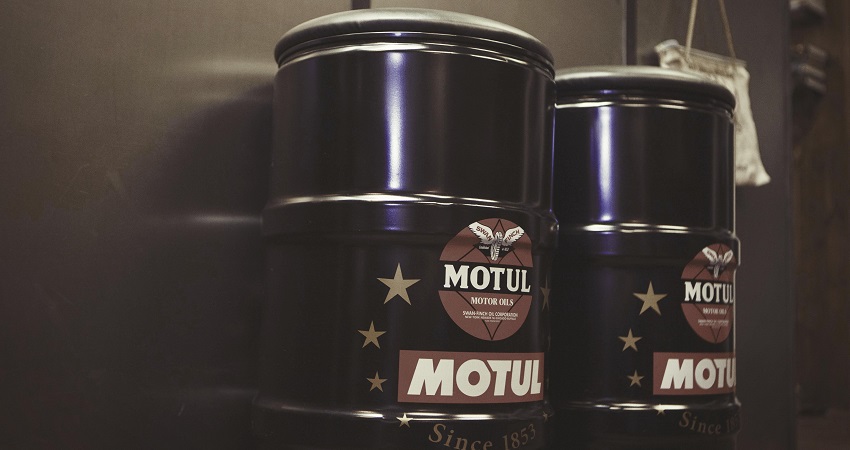
Back in the day, especially before the 1990s, mineral oils were the norm. Car manufacturers designed engines that required a mineral or semisynthetic blend of higher weight. Higher weight was necessary mainly due to lax tolerances where thinner oils simply wouldn’t cut it. In comparison, most of the modern fully synthetic oils are considered thin with viscosity grades topping off at 40 in many cases.
It didn’t help that early synthetic oils didn’t really mix well with classic cars. Certain synthetic formulations were known to react with engine seals, causing them to fail and spring leaks. However, modern synthetic formulas cause no such issues. In fact, modern synthetic base oils can be rather beneficial to classic engines.
Motul’s Classic series of oils are synthetically reinforced, meaning that certain synthetic base oils were used to introduce the latest in lubricant technology to old engines. The result is a product range that deliver modern engine protection in a vintage package.
Speaking of which, this series of oils features 6 different blends. Each one caters to a different era of automotive design.
Motul Classic 2100 15W-50

The Classic 2100 15W-50 is a multigrade oil engineered to meet the needs of cars built in the period between the late ‘60s and late ‘80s. This is a semisynthetic lubricant that features a high ZDDP (Zinc DialkylDithioPhosphates, an additive used to prevent wear) content as well as Molybdenum additives for optimal protection of older internals. In fact, Motul Classic 2100 is the updated version of Motul’s CENTURY 2100 engine oil from the ‘60s. This was the first semisynthetic oil to appear on the market.
Its modern variant also brings a high-temperature oil film strength thanks to its modern synthetic base. A durable oil film ensures cold start protection to critical components while retaining the necessary viscosity at all times.
Motul Classic SAE 50 and SAE 30
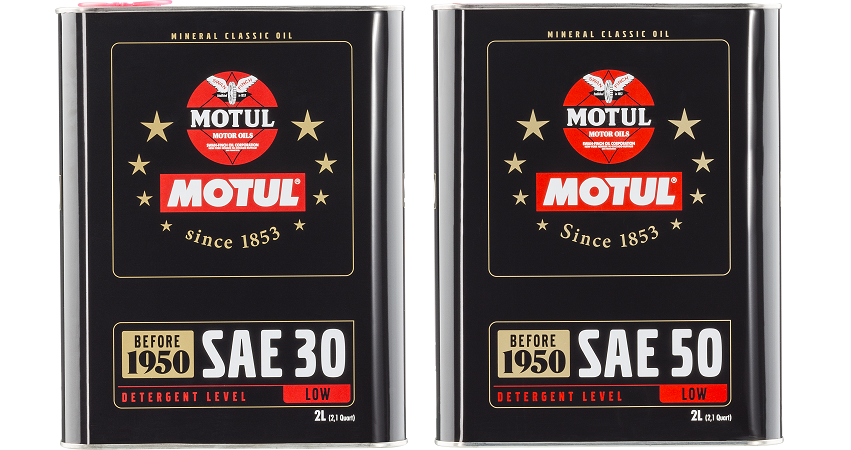
Cars built prior to the 1950s are considered to be true classics these days. Preserving these cars requires custom-tailored lubricants such as the Motul Classic SAE 50 or Classic SAE 30. The main benefit of SAE 50 and SAE 30 is the low amount of detergents both of these oils contain.
Vehicles made prior to the 1950s often used components that aren’t compatible with modern synthetic oils. The use of modern synthetic oils in engines of this vintage can result in oil leaks or damage to critical components. These oils use a premium mineral monograde oil base for period-specific performance.
Motul Classic Performance 20W-50
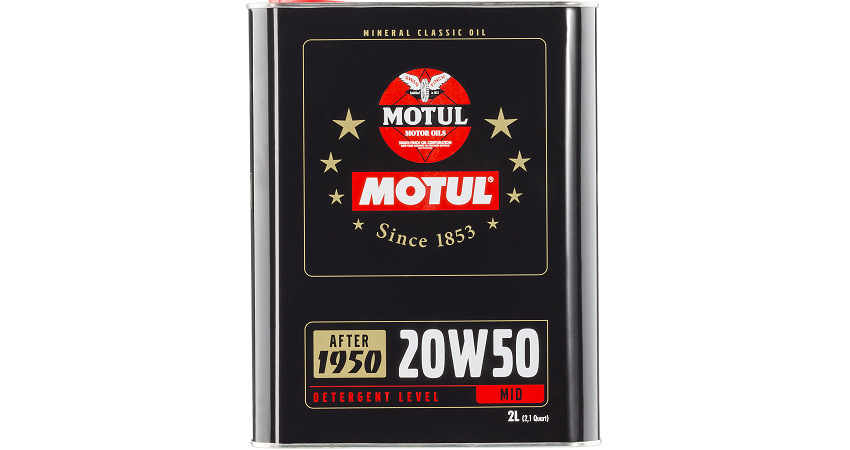
Next up is the Classic Performance 20W-50. This is a mineral multigrade oil that perfectly matches the needs of classic cars built between the 1950s and 1970s. The Classic Performance formula features high ZDDP content as well as Molybdenum additives, in addition to medium levels of detergents.
Motul Classic Performance 20W-50 is the perfect oil for American classic cars, muscle cars, and larger displacement motors from this era.
Motul Classic Eighties 10W-40
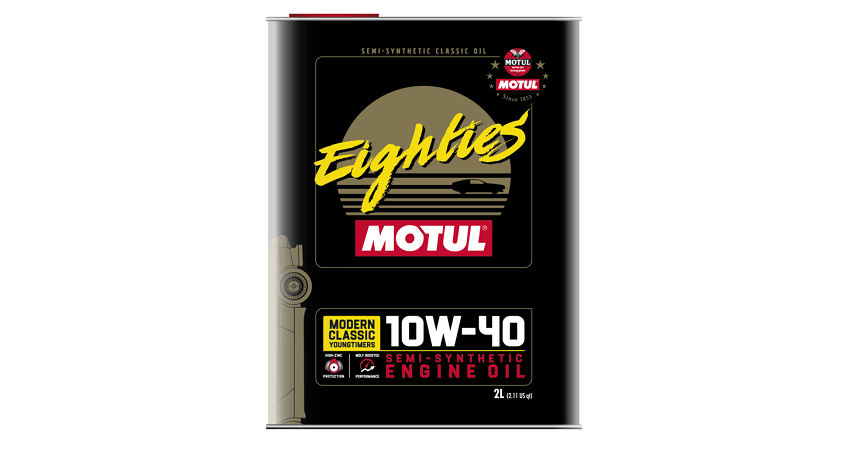
Motul Classic Eighties is a premium semisynthetic multigrade oil designed for use in cars built from the 1980s and later. It’s a great choice for cars that require high ZDDP/Molybdenum content, in addition to a more modern viscosity grade.
The Classic Eighties oil meets and exceeds the API Performance SL standard while introducing modern synthetic technologies. If you’re looking for an oil that will give your youngtimer increased cold start protection and optimal high-temperature oil film strength, Motul Classic Eighties is the answer.
Motul Classic Nineties 10W-30

Similar to the Classic Eighties, the Motul Classic Nineties is a semisynthetic multigrade blend that features most of the same properties. However, this Classic oil was designed for engines that require a lighter viscosity grade.
Can You Use Modern Synthetic Oils In Vintage Cars?
Modern synthetic oils continue to push the limits of performance and lubrication. However, they may not be the ultimate solution for older engines. While modern synthetic formulas are generally free of issues that plagued early synthetic lubricants, there is still the question of detergents.
Older cars feature seals and gaskets made of materials that don’t necessarily react well to modern detergents. Using modern synthetics in old engines could easily lead to seal and gasket deterioration, which in turn would cause all kinds of other issues with those engines.
Using dedicated oils that were specifically made for classic cars is the safest way to approach regular engine maintenance in these vehicles.
Find Out Why So Many Classic Car Owners Use Motul Classic Series
Our Motul Classic motor oils have been around since 2008. These blends have been tested by numerous vintage car owners from all over the world. Whether you own a pre-WWII vintage car or a ‘90s youngtimer, you’ll find that our Classic series of oils offer the best protection and performance.

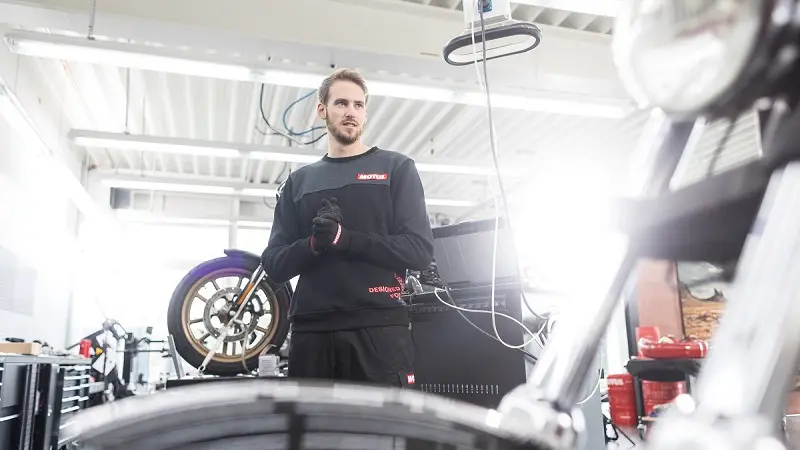
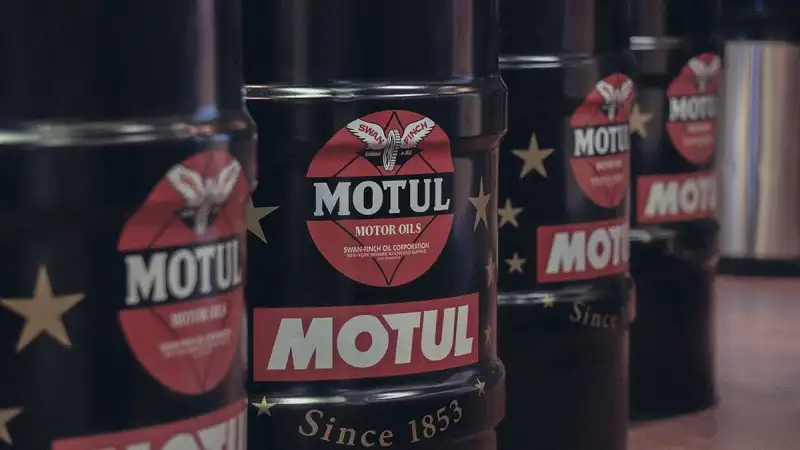


Can you tell me how much ZDDP Motal 15W50 after 1970 contains ? Thank you.